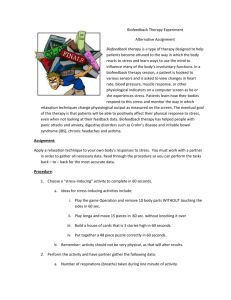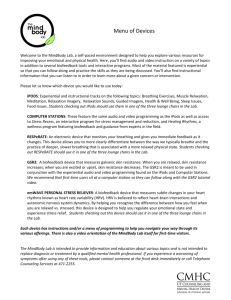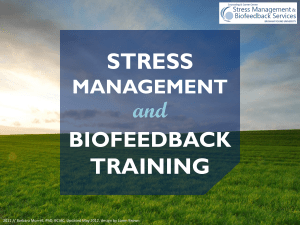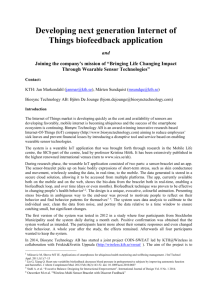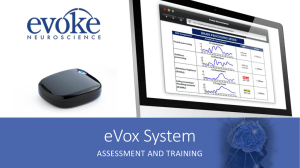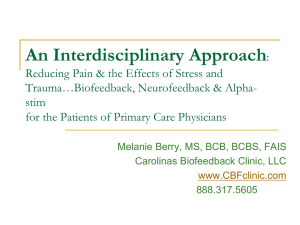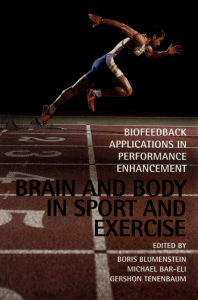Chapter 26: Clinical Biofeedback
advertisement
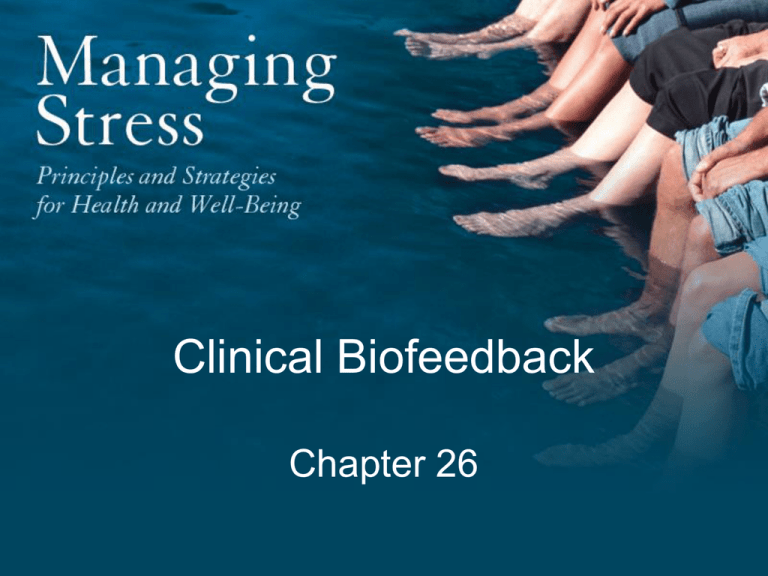
Clinical Biofeedback Chapter 26 “I sing the body electric.” — Walt Whitman An Historical Perspective of Biofeedback • Biofeedback is a technique that gained popularity in the late 1960s • Most people’s exposure to biofeedback is from polygraph tests shown on television shows Biofeedback • Biofeedback is a process of gathering information about specific physiological functions such as: – heart rate – respiration – body temperature Clinical Biofeedback • Clinical biofeedback is the use of monitoring instruments to amplify the electrochemical energy produced by various body organs. Clinical Biofeedback (continued) • Clinical biofeedback allows a person to increase awareness of his or her own physiological responses by learning to monitor them through data gathered by a particular instrument. Clinical Biofeedback (continued) • The purpose of biofeedback is to teach people with stress-related disorders to recondition their responses so that they gain control over the physiological system responsible for their symptoms. The Biofeedback Loop Sensors Detection, Amplification Signal conditioning Person Program logic Feedback Auditory - variety of sounds Visual - numbers, meters, lights Feedback signal processing Recording Biofeedback • Biofeedback teaches people how to monitor and change the frequency and amplitude of the electronic signals by controlling (relaxing) the body region to which the electrodes are attached. The three phases of biofeedback are: – Awareness of physiological response – Control of physiological response – Application of reconditioned response in everyday routines Clinical Biofeedback • Clinical biofeedback, to strengthen the conditioned response, combines sophisticated technology and various other forms of relaxation, including: • diaphragmatic breathing • autogenic training • progressive muscular relaxation • mental imagery Clinical Biofeedback (continued) • There are several types of clinical biofeedback, each monitoring a specific physiological system; these are: • electromyography (EMG) • electroencephalography (EEG) • electrocardiography (EKG) • electro dermal (EDR) Best Application of Biofeedback • To learn to reduce chronic pain of: – Headaches – Stomach cramps – IBS – Colitis – Back pain – Raynaud’s disease – Insomnia Study Guide Questions 1. Explain the rationale for biofeedback as an effective relaxation technique. 2. Explain three different types of biofeedback. 3. List five health conditions that could possibly be improved with the use of biofeedback.
